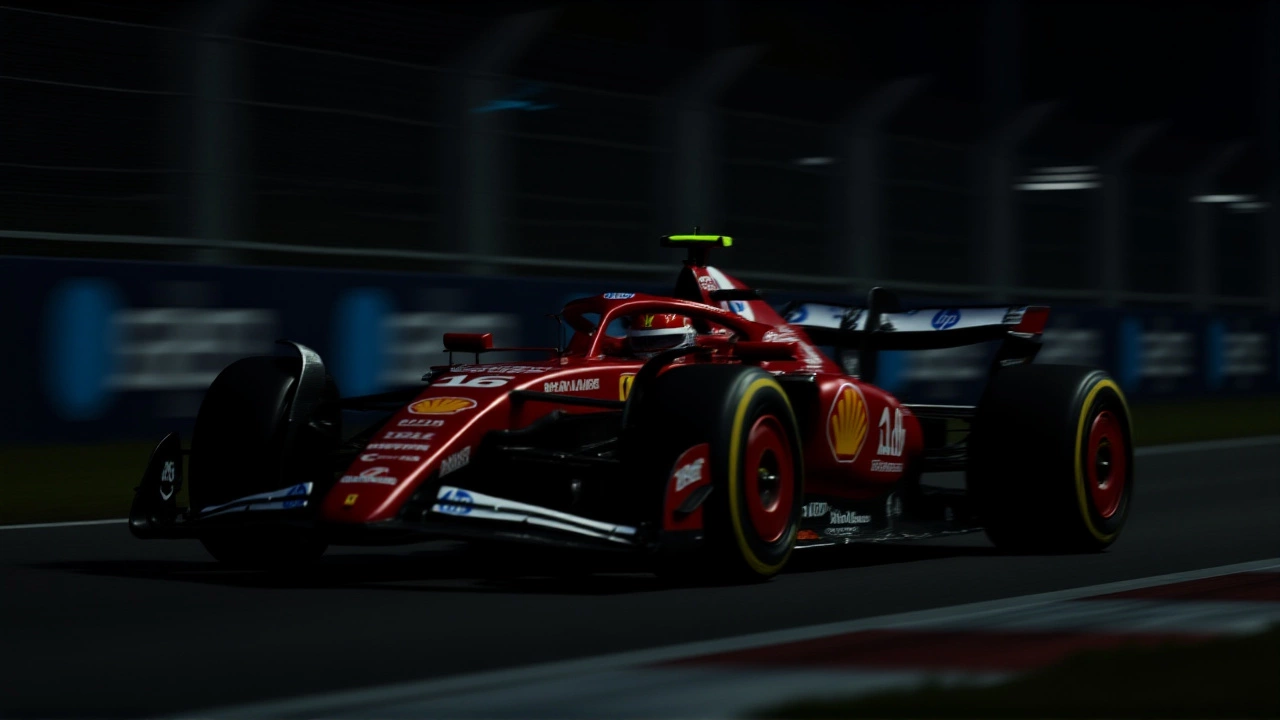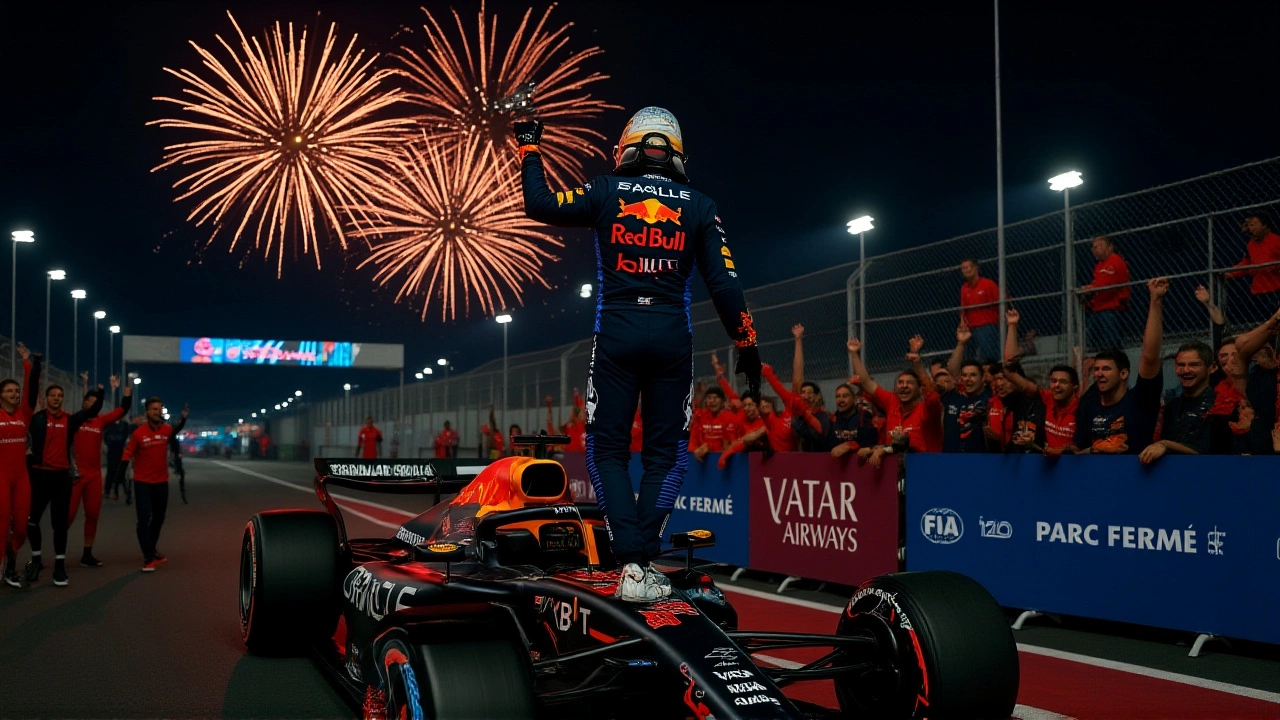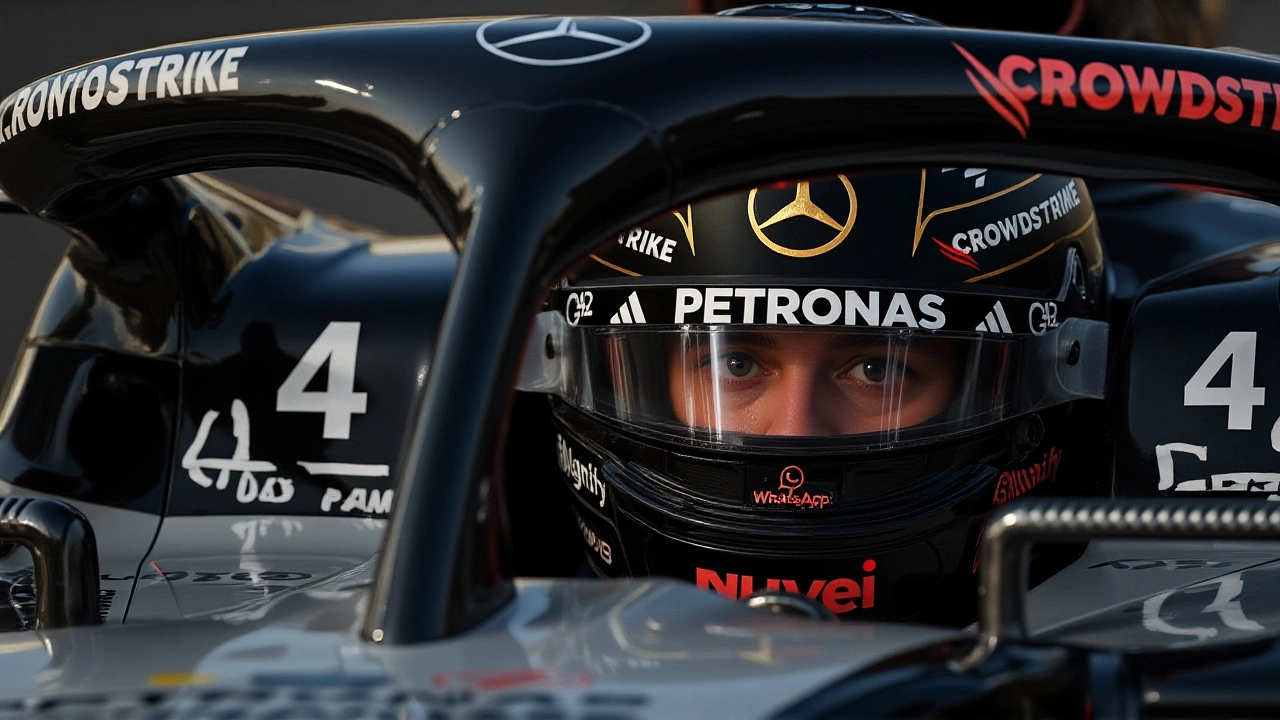George Russell, the British driver for Mercedes-AMG Petronas Formula One Team, clocked the fastest lap in the final practice session of the 2025 Las Vegas Grand Prix — not because the track was dry, but because he dared to push when others held back. The session, held Friday, November 21, 2025, on the Las Vegas Strip Circuit in Paradise, Clark County, Nevada, unfolded under a strange mix of damp patches and drying asphalt, a first for the track since its 2023 debut. Russell’s lap of 1 minute, 34.054 seconds on intermediate Pirelli tires edged out Max Verstappen of Oracle Red Bull Racing by just 0.227 seconds — a margin so slim it felt like a coin toss in a hurricane.
Conditions That Broke the Rules
No one expected dampness in Las Vegas in November. The Strip, usually bathed in neon and dry desert air, had been dusted with morning rain — not enough to cancel, not enough to make it easy. Drivers were guessing. Some waited. Russell didn’t. He went out late, when the track was still slick in spots and the tires were already fading. "The tyre is starting to die already but it’d be very nervous on slicks," said Oscar Piastri, the Australian McLaren driver who was the first to try intermediates. He ended up 19th. His teammate, Lando Norris, finished last — 3.058 seconds behind Russell. That’s not a mistake. That’s a meltdown.
Meanwhile, Alex Albon of Williams Racing nearly lost control at Turn 5, skidding into the runoff before clawing his way back. He still managed third, 0.821 seconds back. Lewis Hamilton, driving for Scuderia Ferrari, rounded out the top five, but his pace was nowhere near his usual standard. The Ferrari crew, who had been strong in FP1 and FP2, seemed to have lost their rhythm. The track, they admitted later, was "unforgiving" — a phrase that echoed through every team garage.
McLaren’s Nightmare
Here’s the twist: just 24 hours earlier, Norris had been fastest in FP2 with a blistering 1:33.602. He was the man to beat. Then came FP3 — and everything unraveled. The McLaren MCL39, usually so composed on street circuits, suddenly became a nervous wreck. The team’s engineers were seen huddled over laptops, faces lit by the glow of telemetry screens. No one could explain it. The car was the same. The setup was unchanged. But the grip? Gone. "It felt like driving on wet glass," one insider told The Race. The fact that Piastri and Norris finished 19th and 20th — behind even the backmarkers — wasn’t just embarrassing. It was alarming.
And it wasn’t just the tires. The track surface, which had been resurfaced ahead of the 2025 race, seemed to react unpredictably to moisture. Teams had trained for heat. Not this. Not slick corners under a drying sky. "We didn’t have a single simulation for this," admitted McLaren’s head of aerodynamics. "We’re flying blind."

The Qualifying Curveball
FP3 was supposed to be the last dry-run before qualifying. But qualifying? It rained harder. And in that chaos, Norris — the man who’d struggled most in practice — turned into a magician. He posted a stunning 1:47.934 to snatch pole, beating Verstappen by 0.323 seconds. It was the kind of performance that makes Formula 1 fans stand up and cheer. But it was also a cruel irony: the driver who’d looked weakest in practice became the fastest when it mattered most.
Verstappen, meanwhile, went wide on his final lap — a rare error from the reigning champion. "I lost the rear on the exit of Turn 11," he admitted afterward. "George had the better line. He deserved it."
What Happened on Race Day
By Saturday, November 22, 2025, the track had dried completely. The sun blazed over the Strip. And the race? It was a masterclass in patience and tire management. Verstappen, starting second, made his move early. He didn’t blitz the field — he waited. He let Norris lead, then pounced on lap 28 with a perfect overtake at Turn 8. Russell, who’d started third, held firm behind him. The Mercedes team, having learned from FP3’s mistakes, managed their tires brilliantly. Russell crossed the line second — his best result in Las Vegas yet.
And then there was Kimi Antonelli. The 19-year-old Mercedes rookie, born in Italy but raised in Monaco, stunned everyone by finishing third. He’d been quiet all weekend. No headlines. No drama. Just flawless execution. "I didn’t think I’d be on the podium," he said, grinning. "I just kept thinking: don’t crash. Don’t make a mistake."

Why This Matters
This wasn’t just about who was fastest on Friday. It was about adaptability. The 2025 Las Vegas Grand Prix exposed how fragile even the best teams can be when conditions defy expectations. Mercedes, after years of chasing Red Bull’s pace, showed they could outthink the competition — not just outdrive them. Meanwhile, McLaren’s collapse was a warning: in Formula 1, today’s leader can be tomorrow’s footnote.
And Russell? He didn’t win the race. But he won something more valuable: respect. He proved that in the right conditions — even the weird ones — he’s not just a supporting actor. He’s the lead.
Frequently Asked Questions
How did the damp conditions in FP3 affect tire strategy for the rest of the weekend?
The unusual dampness forced teams to rethink their entire tire approach. Most expected dry conditions for qualifying and the race, so they’d brought minimal intermediate tires. Mercedes, however, had kept extra sets based on weather forecasts — a decision that gave Russell a critical edge. Teams like McLaren, who hadn’t prepared for wet-weather setups, struggled to adapt, leading to their poor FP3 performance and early race tire degradation.
Why was Lando Norris fastest in FP2 but last in FP3?
Norris’s FP2 pace came from perfect setup on a dry track. FP3’s damp, inconsistent surface exposed weaknesses in the McLaren’s aerodynamic balance, especially in low-grip corners. The car’s rear end became unpredictable on wet patches, and the team couldn’t adjust quickly enough. By contrast, Russell’s Mercedes was more neutral, allowing him to adapt mid-lap — a key reason he topped the timesheets.
What made the Las Vegas Strip Circuit so tricky in 2025 compared to previous years?
This year’s resurfaced asphalt reacted unpredictably to moisture, creating patchy grip levels even after light rain. Unlike 2023 and 2024, where the track dried quickly and evenly, the 2025 surface retained water in low-lying sections near Turn 5 and Turn 11. Drivers reported sudden loss of traction mid-corner — a phenomenon never seen before, according to Formula 1’s track engineers.
How did George Russell’s performance in FP3 impact his race strategy?
Russell’s FP3 time gave Mercedes confidence in their car’s balance under mixed conditions. They adjusted his race setup to prioritize tire longevity over outright speed — a gamble that paid off. He conserved tires early, letting Verstappen lead, then used fresher rubber to close the gap in the final 15 laps. His second-place finish was built on data from FP3, not luck.
Is this a sign that Mercedes is closing the gap to Red Bull?
Absolutely. While Red Bull still holds a power advantage on straights, Mercedes’ improved aerodynamic efficiency and better tire management — especially in tricky conditions — are closing the gap. Russell’s FP3 and race performances, combined with Antonelli’s podium, suggest Mercedes has found a consistent way to challenge Verstappen — not just on power, but on strategy and adaptability.
What’s next for McLaren after this performance?
McLaren has already launched an internal review into their FP3 setup. Sources say they’re re-evaluating their suspension geometry and front-wing design for street circuits. With Norris and Piastri both under pressure, the team may make major changes before the next race in Qatar. This wasn’t just a bad weekend — it was a red flag.


